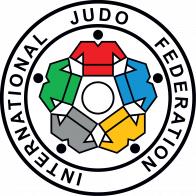 a Summer Games Paralympic Sport
a Summer Games Paralympic SportGoverning Bodies
International Governing Bodies

International Judo Federation (IJF)

International Blind Sports Association (IBSA)
National Governing Bodies
United States

USA Judo
United States

U.S. Association of Blind Athletes (USABA)
Introduction:
Judo is an unarmed modern Japanese martial art and the most prominent form of jacket wrestling competed internationally. The objective of competitive judo is to throw an opponent, immobilize them with a pin, or force an opponent to submit with a joint lock or a choke. A judo practitioner is called a “judoka”, and the judo uniform is called “judogi”. Paralympic judo is an adaptation of the Japanese martial art of judo for visually impaired competitors. The rules of the sport are only slightly different from regular judo competitions. Para Judo is practiced exclusively by athletes with vision impairments and follows the same rules as its Olympic equivalent. Unable to see their adversary approaching or attacking, judokas must use their sense of touch to ‘feel’ what their rival is about to do. Breathing, movements and grip of the judogi – they must pay attention to every tiny detail.
History of the Sport:
Para Judo has been part of the Summer Paralympics program since 1988 for men and 2004 for women.
Rules – How to Play the Sport:
Paralympic judo competition is governed by the International Judo Federation (IJF) rules with some modifications specified by the International Blind Sports Association (IBSA). The major rule difference is that contests always start with the 2 competitors in a loose grip on each other’s Judo suits (grip called “Kumikata”) and if contact is broken, “mate”(Wait), or stop, is called and the competitors return to center and regrip.
The objective is to throw the opponent to the ground, immobilize them with a pinning hold or force them into submission with a joint lock or choke. There are two types of advantage in modern judo. The first, ippon, is awarded for a throw that places the opponent on their back with strength, speed and control, or submission (by choke or joint lock) or pinning them to the ground for 20 seconds. If a judoka achieves ippon, they immediately win the match. The second advantage is waza-ari, which is awarded either after an impact that misses one of the three criteria for ippon or when an opponent is pinned down for less than 20 seconds (but longer than 10 seconds). Two waza-ari in one match is the equivalent of ippon and means victory for the recipient.
Matches last four minutes, breaks excluded. If neither judoka achieves an ippon before the end of the match, the one with the highest score wins.
Although judokas are classified into categories according to the level of their vision impairment, all three sight classes compete together and are divided according to their weight. Male weight divisions range from 60kg to over 100kg, while female weight divisions range from 48kg to over 70kg.


